Spring has sprung, the clocks have gone forward, and the days are (finally) longer and lighter. April is often the month when people make plans to declutter and spruce up their home. But what’s behind the tradition of spring-cleaning – and why do so many of us still stick to it? There are quite a few theories. Before central heating, winter warmth meant coal, soot and grime everywhere. As soon as spring arrived, this would be
scrubbed and rubbed away. Some forms of spring-cleaning have their roots in cultural and religious beliefs. And of course, we generally have more energy to accomplish cleaning chores when the sun comes out! Whatever motivates you to make everything spotless, now is the ideal time to begin. Read on to discover product assistant manager Ashley Allen’s top tips on how to spring-clean your kitchen appliances.
Let’s be honest, cleaning the oven isn’t a chore that many people enjoy, in spring or any other season. But if it’s a job you absolutely loathe, why not invest in a pyrolytic version like our C2600 model?
Oven-ready?
It does all the hard work, so you don’t have to! These are self-cleaning appliances, which are easy to operate, and require minimal effort to keep clean. Forget about rubber gloves, harsh detergents and arduous elbow grease. This oven’s pyrolytic self-cleaning function raises the internal temperature to 475°C, causing baked-on grime and cooking residues to carbonise into fine ash. All you need to do is simply wipe this away with a damp cloth.
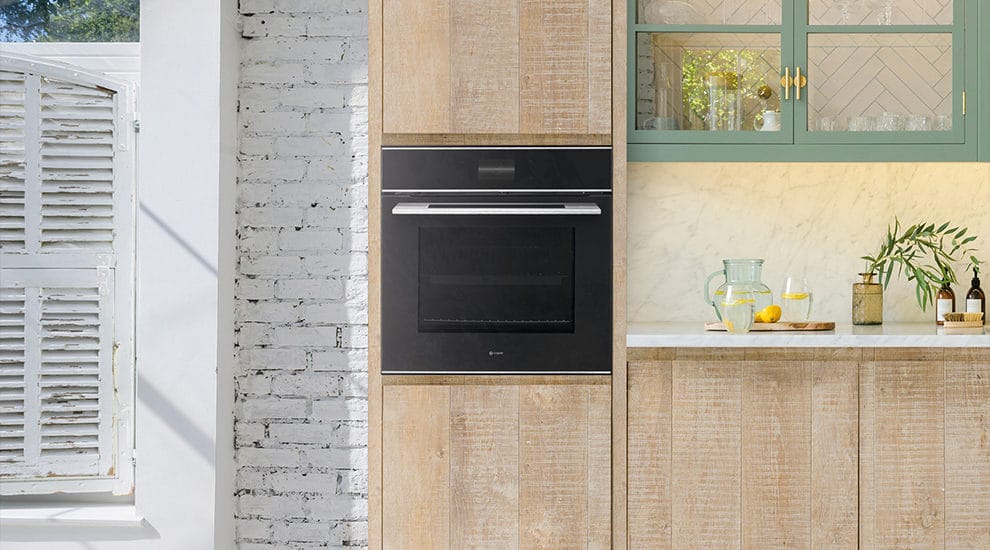
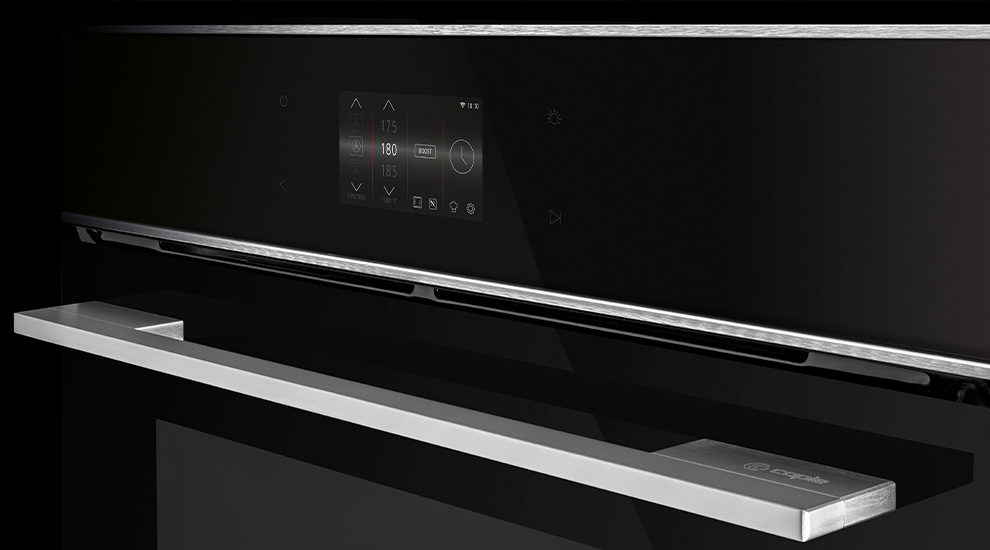
If you need to spring-clean an oven without a pyrolytic setting, first buy some baking soda and vinegar. Where kitchen appliances are concerned, I’m a big fan of non-toxic, natural cleaning agents that are safe to use around food surfaces. Make a paste, using around seven tablespoons of baking soda, loosened with a little water. Spread this paste over your oven interior, avoiding the heating elements. For the best results, leave it overnight, then remove using a damp cloth or a spatula. Spritz a little white vinegar over any stubborn residue, then do a final wipe down. Your oven should be clean and shiny, ready for your next culinary masterpiece.
Cleaning your microwave
Built-in combination microwaves, like our CM111SS, look sleek and chic. But unlike a hob or countertop which is on constant display, the inside is hidden away. If out of sight means out of mind, it’s easier for dirt and grime to lurk unnoticed. So when the time comes to spring-clean it, your microwave might need some extra TLC.

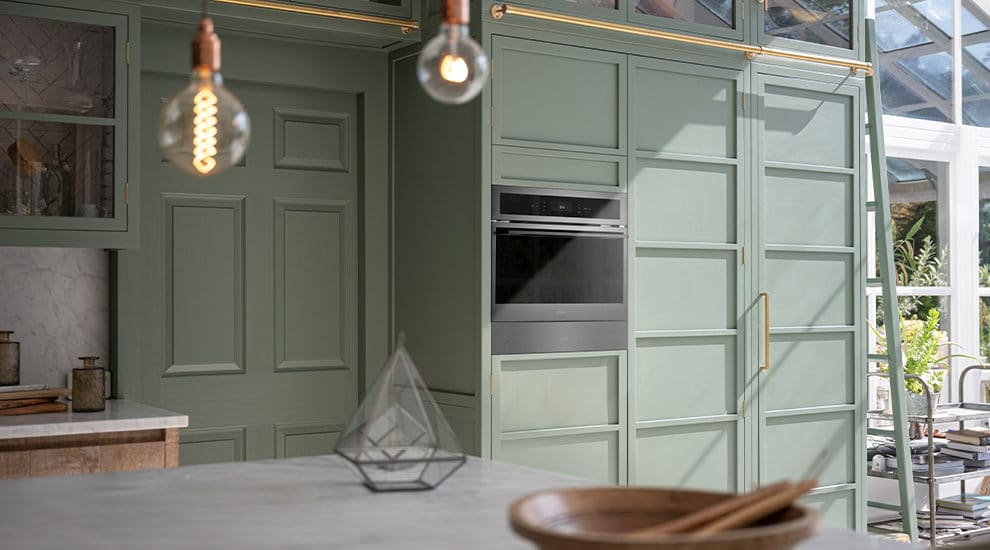
Did you know that citrus fruits have cleaning superpowers? Their freshening properties are an excellent way to banish lingering microwave odours. Simply add some lemon, lime or oranges slices to a bowl of water. Place them inside your microwave, and ‘cook’ until the mixture boils and the window steams up. Let the water cool for a few minutes before removing. Then simply wipe the inside with a clean sponge. If your microwave door is greasy, dampen a sponge and dip it in a little baking soda. Then wipe it everywhere, including over all the edges, and around the seals.
French door fridge-freezers, like our CAFF42 model, offer high levels of versatile storage that are perfect for large families. All these appliances include places for drips, spills, stickiness and sogginess to proliferate! Regular cleaning is essential, both from a food-safety and aesthetic point of view. But a thorough spring-clean is a great opportunity for a really good clear-out. In fact, for every fridge, I’d recommend a deep clean every three to four months.
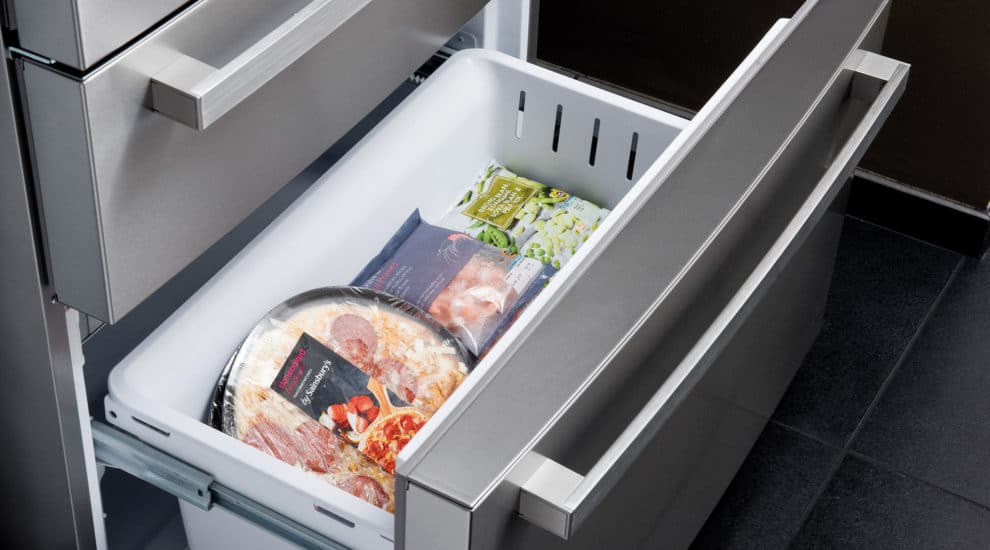
How to spring-clean your fridge-freezer
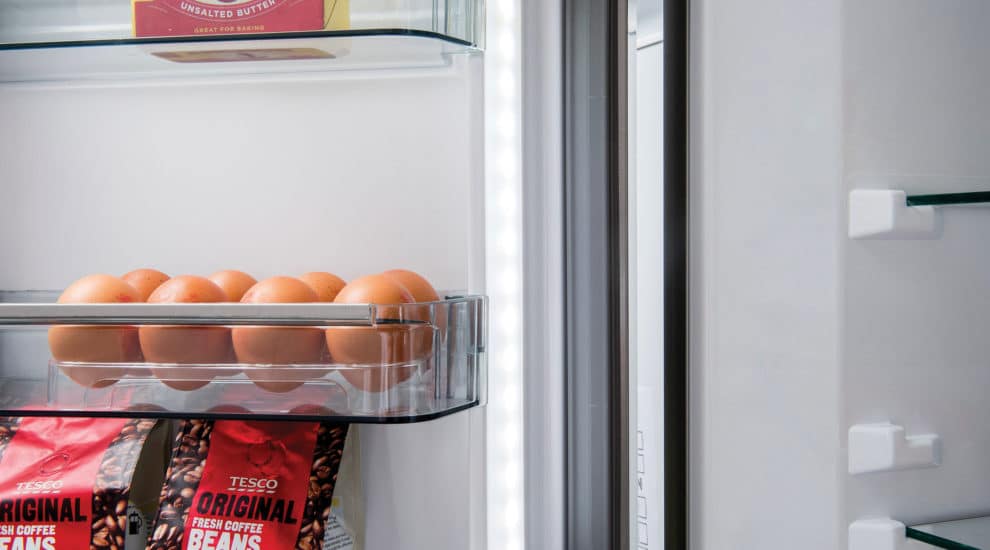
To do this effectively, first of all, remove all food. Next, take out any drawers and all removable shelves, then wash them with hot water and a splash of washing-up liquid. Rinse with clean water, then allow to dry naturally. Then wipe down your fridge interior. Hot water isn’t such a great option here. That’s because it raises the fridge temperature, which will delay how quickly you can safely re-stock it after cleaning. Milton Sterilising Fluid, mixed with cold water, is a much better alternative. Use a toothpick or cotton bud for grooves and other hard-to-reach areas. Then simply dry the inside of your fridge using a clean tea towel.
For a frost-free appliance like our CAFF42, defrosting the freezer before spring-cleaning it isn’t necessary. But do unplug it, to minimise energy wastage. Get rid of any food that’s out of date or freezer burned, and store the rest in a cooler (or with a kind neighbour). Then wipe away any debris, and clean the appliance’s walls and bottom with a mix of warm water and vinegar or baking soda. Wipe dry with a clean towel, then replace the food.
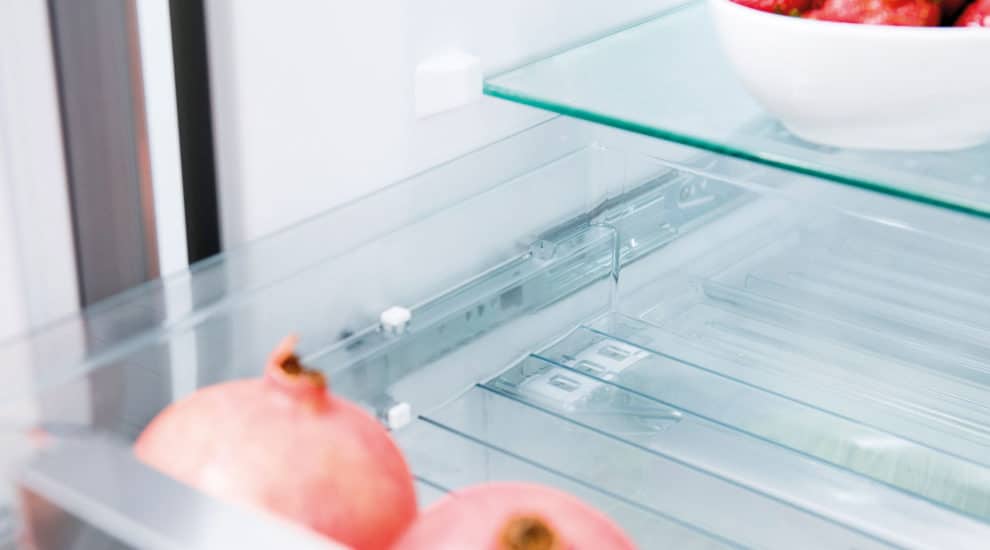
Keeping your hob hygienic
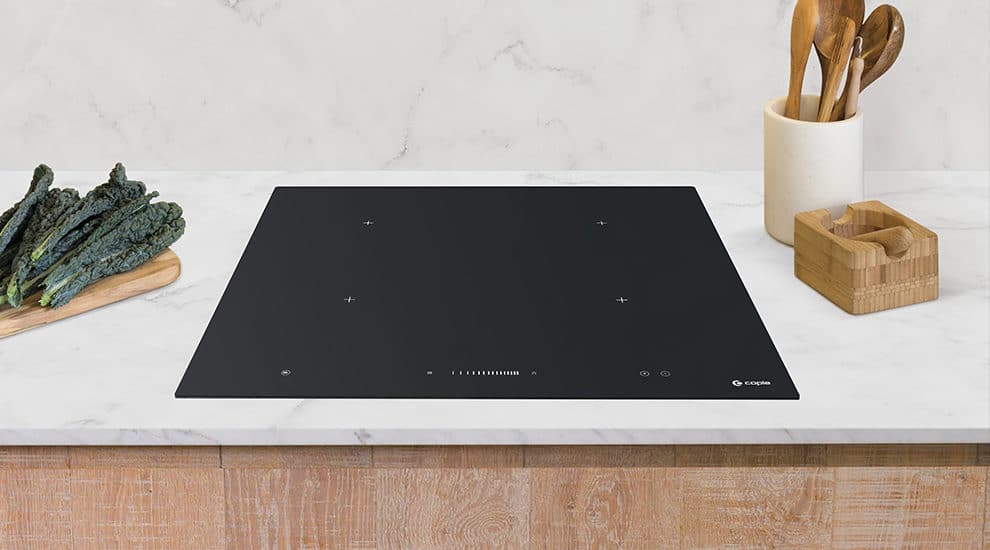
Modern induction hobs like our C858i model deliver faster, safer, energy-efficient cooking. But you do need to be careful when you spring-clean them. Harsh, abrasive formulas will scratch and scuff. Instead, I recommend those natural stalwarts, vinegar and baking soda. Simply wipe on a layer of vinegar, and follow with a sprinkling of baking soda. Leave this combination to work for a half hour, then wipe away using warm soapy water. Dry completely, then use a soft, microfibre cloth to buff the surface.
If you love the control and versatility of gas hobs like our C873G, you’ll accept that they are a little more labour-intensive to spring-clean than their induction counterparts. But a little baking soda will ride to your rescue yet again. Remove the burners and caps, and soak them in a bowl of soapy water. Scrub away any build-up with a non-abrasive pad and an old toothbrush. Spread a baking soda paste over the gas hob itself, especially if there are any stubborn stains. Leave for 15 minutes then wipe away with a clean, damp cloth.
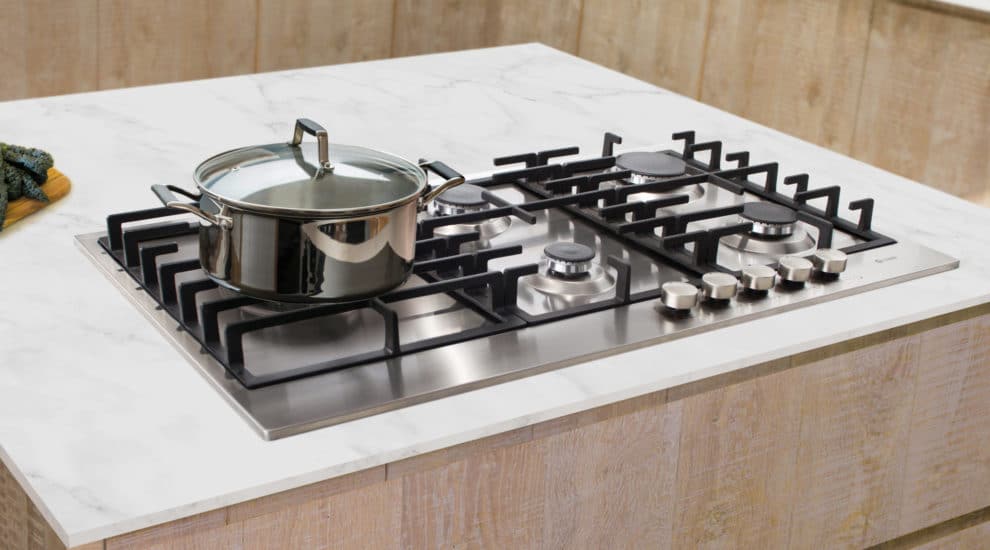
Spring-clean your dishwasher

Most of us couldn’t imagine life without our dishwasher. Integrated appliances like our Di653 are more energy-efficient than washing dishes by hand. And functions like express programmes save serious time, too. But even a machine that washes dishes daily, needs its own spring-clean.
To do this effectively, first remove all the racks, utensil holders and the filter. Soak these in a mix of warm water and white distilled vinegar for at least half an hour. Then remove any food debris, and also check the detergent dispenser. Next, place a bowl of white vinegar in
the bottom of the dishwasher, and run a hot-water cycle. When that finishes, sprinkle a little baking soda inside your machine, and run a short cycle. Together, these will break down any hidden particles of food, grease and soap scum, remove stains, and freshen your dishwasher.
The appeal of steel
Spring-cleaning stainless steel appliances involves another challenge: how to remove those stubborn streaks and bring back the original shine. Luckily, there are plenty of ways to restore their original lustre. Just make sure you avoid bleach, ammonia, steel wool and scourers.
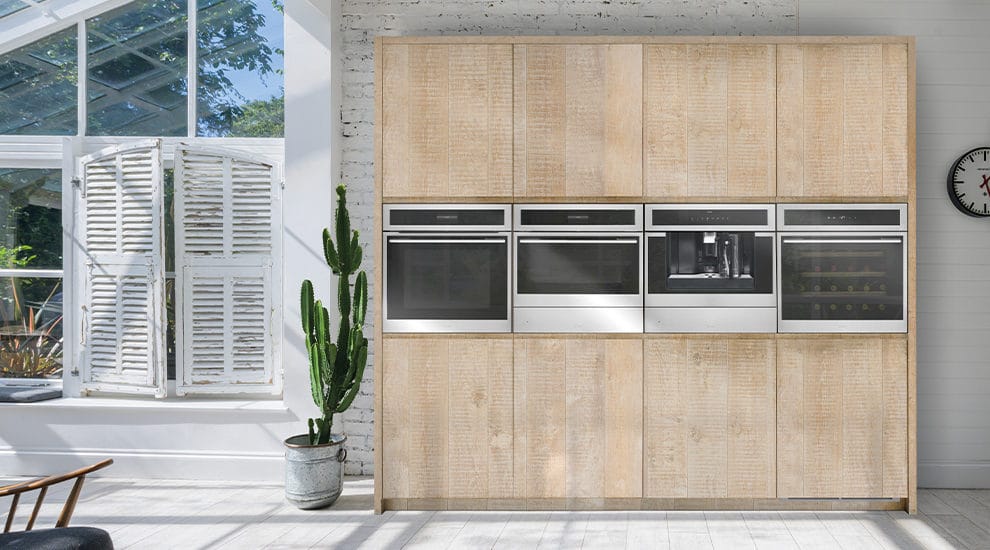
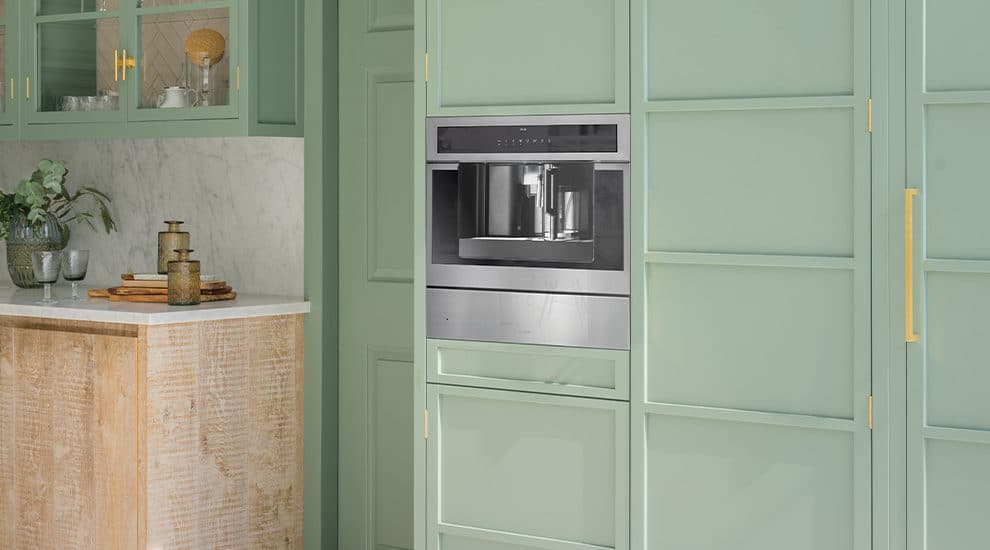
Hot water and washing-up liquid make short work of dirt and grease. Using a microfibre cloth, apply to small sections at a time, and always wipe in the direction of the metal’s grain. A light coating of mineral oil is a great way to shine the surface. Buff well to avoid any build-up – and don’t use a food-based oil, in case it turns rancid!
Of course, your sink isn’t an appliance but, in terms of usage, it’s the workhorse of your kitchen. They can be made from a wide variety of materials, which need different types of care and attention to keep clean.
That sinking feeling
Some of our ceramic sinks, like this Lingfield model, have a special hygiene finish. This means they are specially glazed to reduce surface bacteria by 99.99%, preventing germs from spreading. Unlike a thin coating, this anti-bacterial glaze will last the lifetime of the sink, and is safe to use in every environment.
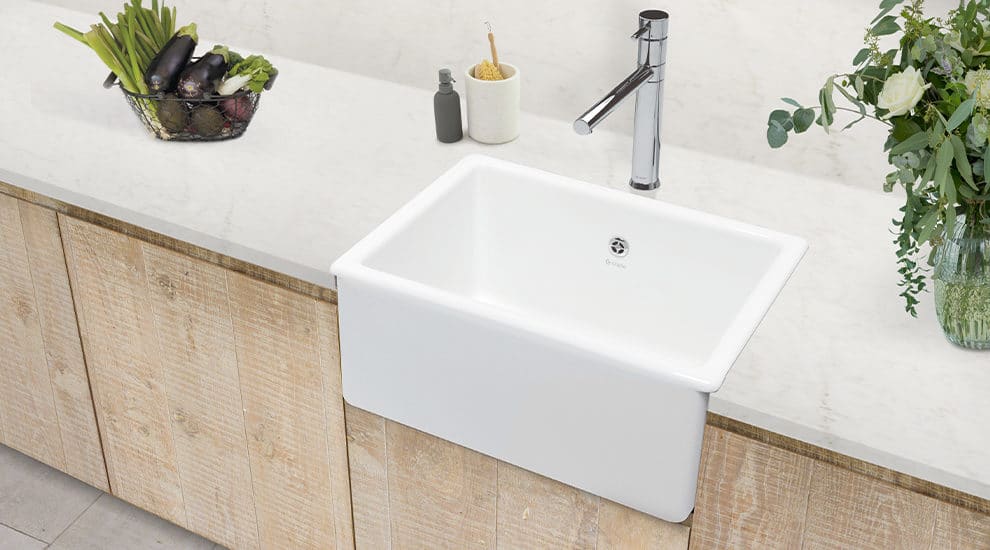
If your sink doesn’t have this protective finish, and is looking soiled and stained, crack open that baking soda again! Work it into the surface using a damp sponge, then rinse well.
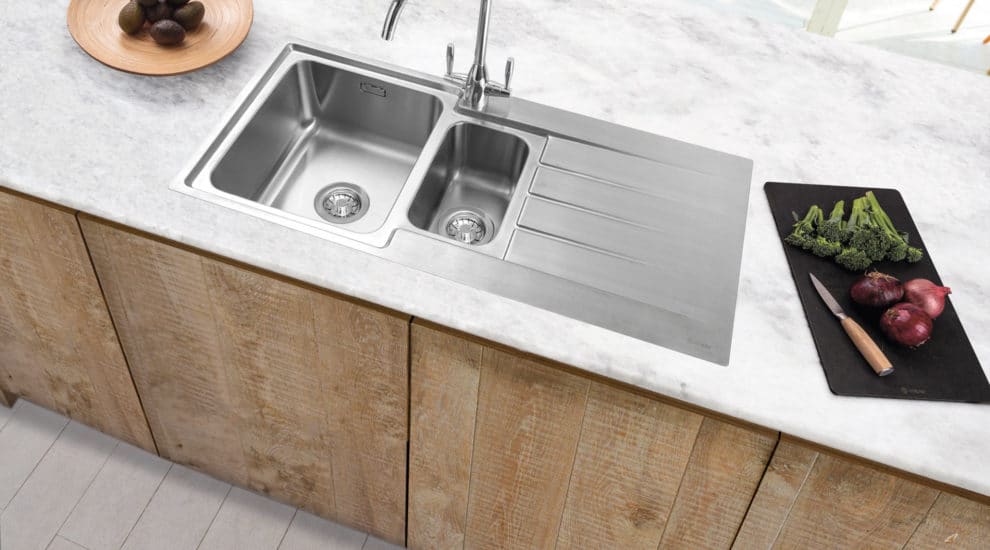
If your sink doesn’t have this protective finish, and is looking soiled and stained, crack open that baking soda again! Work it into the surface using a damp sponge, then rinse well.
Cramer collection
You can remove limescale and other deposits gently with our Cramer collection, which should help to get rid of the toughest stains and/or damage. These cleaners have been cleverly designed to suit a variety of surfaces. In fact, we’ve got six high-performance products in our collection. The Cramer Enamel Rubber has been designed for intensive cleaning to remove marks on ceramic surfaces, from rust to stubborn stains. The eco-friendly, bio-degradable Tap Cleaner will leave this and your sink, in finishes such as stainless steel, positively gleaming.
Why not try the Email-Star for gentle cleaning and careful removal of limescale, discolouration and dirt deposits with a polish, too? We can even cater for granite sinks with the Cramer Acryl Mineral, which will treat this special surface without causing damage or abrasion. This brilliant product is environmentally-friendly and bio-degradable, too. Last, but not least, the Repair-Kit provides a professional corrective finish for minor damage and chipping in an enamel, ceramic or acrylic sink.
Click below to learn more about clean kitchen trends.